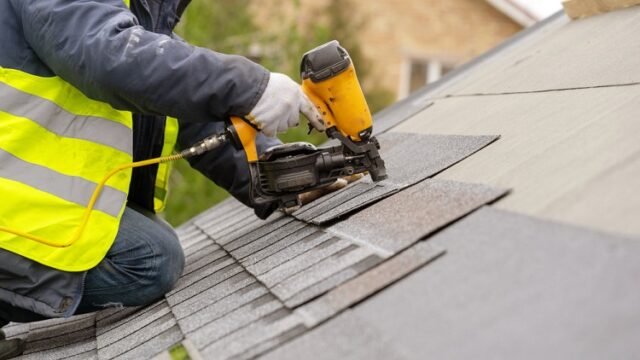Commercial roofing may not be the most glamorous topic, but it’s an essential aspect of maintaining any business property. From protecting against the elements to ensuring structural integrity, the roof plays a critical role in safeguarding the assets within. Let’s break down the basics of commercial roofing in simple terms to help you understand its importance and key considerations.
Table of Contents
What is Commercial Roofing?
The term “commercial roofing” describes the process of installing, maintaining, and repairing roofs on structures other than homes, including workplaces, warehouses, retail establishments, and industrial facilities. Commercial roofs, in contrast to residential roofs, are frequently flat or low-sloped and may demand for different materials and installation and maintenance methods.
Importance of Commercial Roofing
The roof is the first line of defense against weather elements such as rain, snow, wind, and UV radiation. A well-maintained roof prevents water leakage, protects against structural damage, and helps maintain a comfortable and safe indoor environment for employees, customers, and inventory. Contact Roofers Scarborough for more information.
Types of Commercial Roofing Materials
Commercial roofs can be constructed using various materials, each with its own advantages and considerations:
Built-Up Roofing (BUR): consists of felt or fiberglass reinforcing fibers between several layers of asphalt. Although BUR is strong and offers good waterproofing, it may be bulky and need constant upkeep.
The flexible sheets of synthetic materials, such as TPO (thermoplastic polyolefin) or EPDM (ethylene propylene diene terpolymer), are used to make single-ply membrane roofing. Single-ply membranes provide high protection against chemicals and UV rays while being lightweight and simple to install.
Metal Roofing: Typically made of steel, aluminum, or copper, metal roofs are durable, fire-resistant, and recyclable. They are suitable for large commercial buildings and offer long-term performance with minimal maintenance.
Modified Bitumen Roofing: Similar to BUR but with added polymer modifiers for enhanced flexibility and durability. Modified bitumen roofs are ideal for low-slope or flat roofs and provide excellent waterproofing and weather resistance.
Factors to Consider in Commercial Roofing
When selecting a roofing system for a commercial building, several factors should be taken into account:
Climate: Consider the local climate and weather conditions, including temperature extremes, rainfall, snowfall, and wind speeds. Choose a roofing material that can withstand these conditions and provide adequate protection.
Building Usage: The type of commercial building and its intended use can influence the choice of roofing material. For example, a warehouse may require a different roofing system than a retail store or office building.
Budget: Determine the budget for the roofing project, including installation costs, maintenance expenses, and expected lifespan. Balance upfront costs with long-term durability and performance to achieve the best value for money.
Energy Efficiency: Consider the energy efficiency of different roofing materials and their impact on heating, cooling, and overall energy consumption. Choose a reflective or insulated roofing system to reduce energy costs and improve indoor comfort.
Maintenance Requirements: Evaluate the maintenance requirements of various roofing materials and choose one that fits your maintenance capabilities and schedule. Regular inspections and maintenance are essential for prolonging the lifespan of the roof and preventing costly repairs.
Importance of Professional Installation and Maintenance
Proper installation and regular maintenance are critical for ensuring the longevity and performance of a commercial roof. Hiring a qualified roofing contractor with experience in commercial roofing is essential to ensure that the roof is installed correctly and meets industry standards. Additionally, scheduling routine inspections and maintenance tasks such as cleaning gutters, repairing leaks, and replacing damaged shingles or membranes can help prevent issues and extend the lifespan of the roof.
In summary, commercial roofing plays a vital role in protecting commercial buildings and their occupants from the elements. By understanding the different types of roofing materials, considering factors such as climate and budget, and investing in professional installation and maintenance, businesses can ensure the durability, reliability, and longevity of their commercial roofs.








